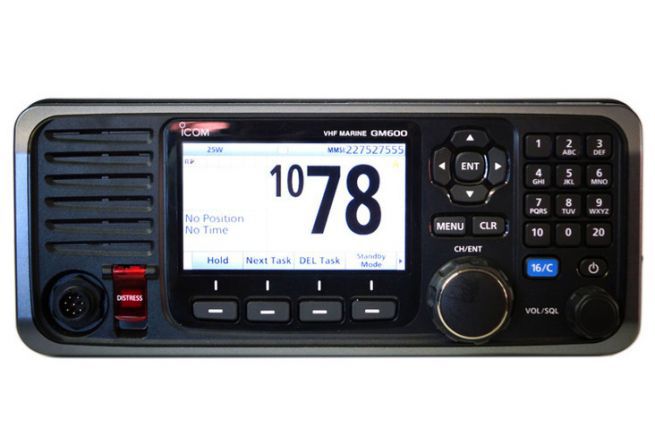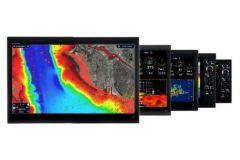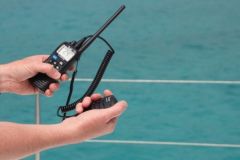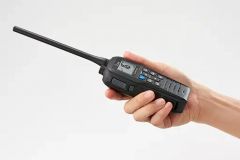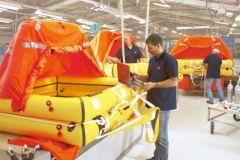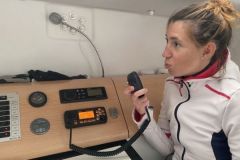Simplex or duplex?
VHF operates over a range of frequencies known as "metric frequencies" on which "channels" are reserved. A channel can be
- or simplex
- or duplex.
On a channel simplex the transmit frequency is the same as the receive frequency. This is why it is necessary to speak each in turn, freeing the channel at the end of the transmission to receive the return. In order not to be scrambled, the conversation will be alternately carried out by one speaker then by the other. The conversation must be established in alternation: under no circumstances can transmission and reception be simultaneous. Hence the need to punctuate the end of a transmission phase with the "to you" or "to you" which indicates to the other correspondent the moment of alternation.
The channels duplex have a different transmit frequency than the receive frequency. In Europe these two frequencies are 4,600 MHz apart (e.g. channel 07 has a transmitting frequency of 156,350 MHz and a receiving frequency of 160,950 MHz). On these channels, which are reserved for communication with coast stations, it is not possible to talk directly between two portable or fixed VHF stations.
In practice, duplex channels were made to connect land bases with ships. But with the new communication systems, these channels are no longer used. Whereas simplex channels, which are still very active, are used for direct communication between two ships.
Channels to be retained for recreational use
In the marine sector, there are 4 VHF channels used for ship-to-ship exchanges:
- 06
- 08
- 72
- 77
To converse with a boat, you contact it on 16 (quickly so as not to clutter up this safety channel) and you switch to one of the 4 channels reserved for this purpose.
In addition to these ship-to-ship exchange channels, you may be able to use the following channels on a pleasure boat:
- 09: Harbour master's office for marinas
- 10 : Semaphore of the French Navy
- 18: Lock
- and some CROSS channels used to broadcast weather reports (63, 79, 80 ...)
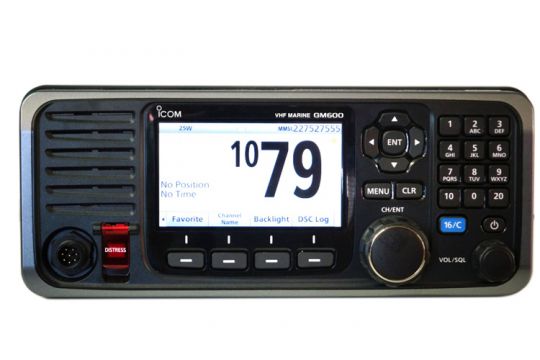
4 new channels for pre-equipped stations
New communication systems (satellite telephone in particular) make the use of duplex channels to contact earth stations obsolete. As a result, the ANFR, which manages frequencies in France, has decided to "free up" duplex frequencies to make them available as simplex.
Thus, since 2017, the VHF which allow it (this is the case of the whole fixed and portable Icom range) have access to the channels :
- 1019
- 1020
- 1078
- 1079
Ensuring an effective watch with its VHF
On a VHF, you can listen to one channel (the one displayed on the screen). But more sophisticated devices such as the Icom marine range (fixed or portable) offer the possibility of simultaneously monitoring 2 or 3 channels depending on the settings and parameters of your VHF.
- Priority channel :
The voice priority channel is channel 16. It is used internationally as a call and security channel, it is therefore this channel that is scanned alternately with the other channels during a priority scanning (or scanning), priority scanning is mandatory in France. - Preferred channel or "Call" channel
This channel is programmable by the user at his convenience, it can be recalled at the touch of a button. This is the channel that is used by the Triple Watch. - Dual Watch
Dual Watch is an alternating scan between the displayed channel and the priority channel (16). - Triple Watch
Triple Watch is an alternating scan between the displayed channel, the preferred channel, and the priority channel, it is important to note that on Icom VHF triple watch, if receiving on the displayed channel or the preferred channel, the priority channel is always scanned in double watch.
